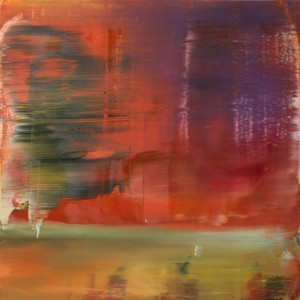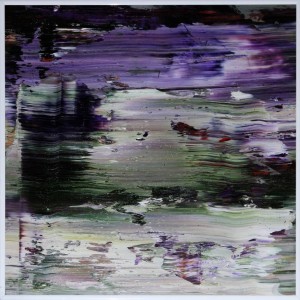Inside the Studio
 Koen Lybaert
Koen Lybaert
Favorite material to work with?
My favorite material is oil paint. I like to start with the pure basics, mixing pigments and oil to make my own paint.
What themes do you pursue?
A theme I often return to is landscapes, based on my pictures taken mainly on holidays and my daily walks.
In general, I don’t stick to any one theme, style, or medium. The last five years, I’ve spent most of my time working with oil painting and photography, but watercolors and sculptures are also part of my process. I want to keep on being free in spirit and art.
How many years as an artist?
I started at the age of 17 (30 years ago), mainly making music and some paintings and abstract glass/wood sculptures. Around my mid-twenties, I had to make some choices. I became a father and had to get a full-time job. At that time, I decided to commit myself to creating alternative electronic music and my own record label in my free time. It took about 20 years, (and the collapse of the music industry) to make the final switch and since 2008, I am fully committed to painting and photography.
Where is your studio?
In my house. Downstairs I have a small office for the more practical work (computer, art-photography) and I use one room upstairs for painting.
What was the best advice given to you as an artist?
I can’t recall anyone ever giving me advice about my art or being an artist. I guess that I just want to be myself and be critical about my own creative output.
Art school or self-taught?
100% self-taught. I’ve educated myself through experience, books, and the Internet, as well as visiting museums on a regular basis. Seeing art in person is very important to me. The feelings and emotions I experience once I stand a few meters from an artwork I like can give me an everlasting impression. Seeing the real thing is, to me, the best lesson I can get.
Prefer to work with music or in silence?
I work completely in silence. I prefer no other distraction than the sound of painting itself in combination with the sounds of nature coming from my window. I always work in sessions of a few hours, one during the afternoon, one during the evening, and also a final one at night. As our bedroom is next to my studio, I respect my wife’s sleeping hours and work in silence. The silence of the night is also perfect for being fully concentrated on painting.
What’s around the corner from your place?
Nature. I live in the Flemish countryside in Geel, Belgium surrounded by fields. There are 3 other houses on our street.
Where can we find you outside the studio?
In nature. When possible, I take a daily long walk, something between 2 and 4 hours, always with a camera in my backpack. I like to live in solitude and have my mind set on my creative process. A big part of my work happens in my mind, and these daily walks are perfect to put things and ideas in order.
If you couldn’t be an artist, what would you do?
Something related to creativity. I’ve worked in a record store and in music distribution in the past, so something similar would be possible.
Day job?
Not anymore. Being creative is my day job (starting in the afternoon and ending very late at night). I am fortunate to have a great supporting wife.
What do you collect?
I have a lot of vinyl and CDs, as well as a big collection of DVDs. I never had the money to collect art myself.
Favorite contemporary artist?
Gerhard Richter, Mark Rothko, Matisse, Monet, Leon Spilliaert, Kandinsky, Jackson Pollock…
If you could only have one piece of art in your life, what would it be?
“Cage 2” by Gerhard Richter.
Who are your favorite writers?
William S. Burroughs, Jack Kerouac, and the Belgian writers Willem Elsschot and Tom Lanoye.
Monet or Manet?
Monet. The water lilies of Monet made a major impression on me when I saw them about 25 years ago at the Musée de l’Orangerie in Paris.
















